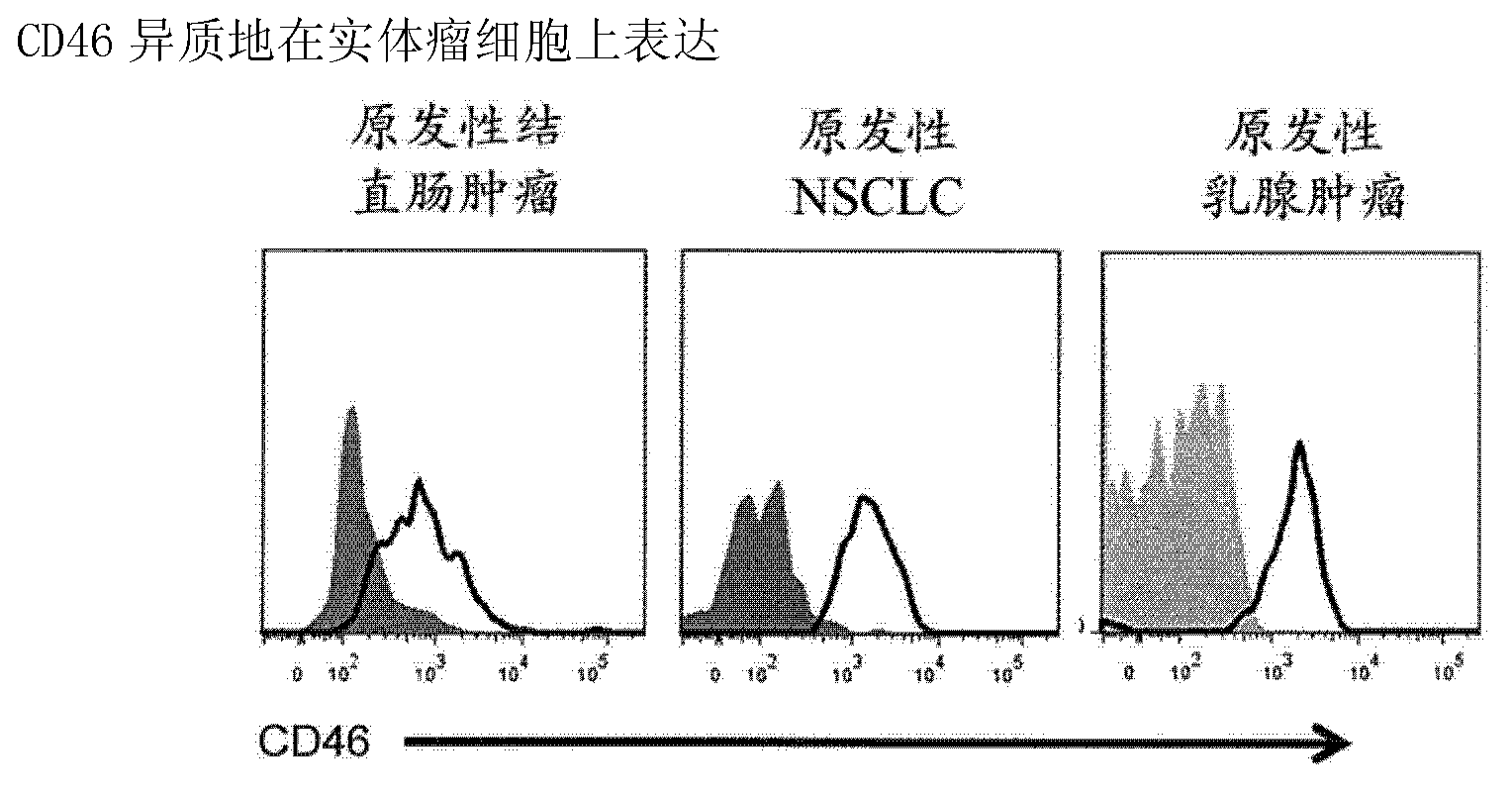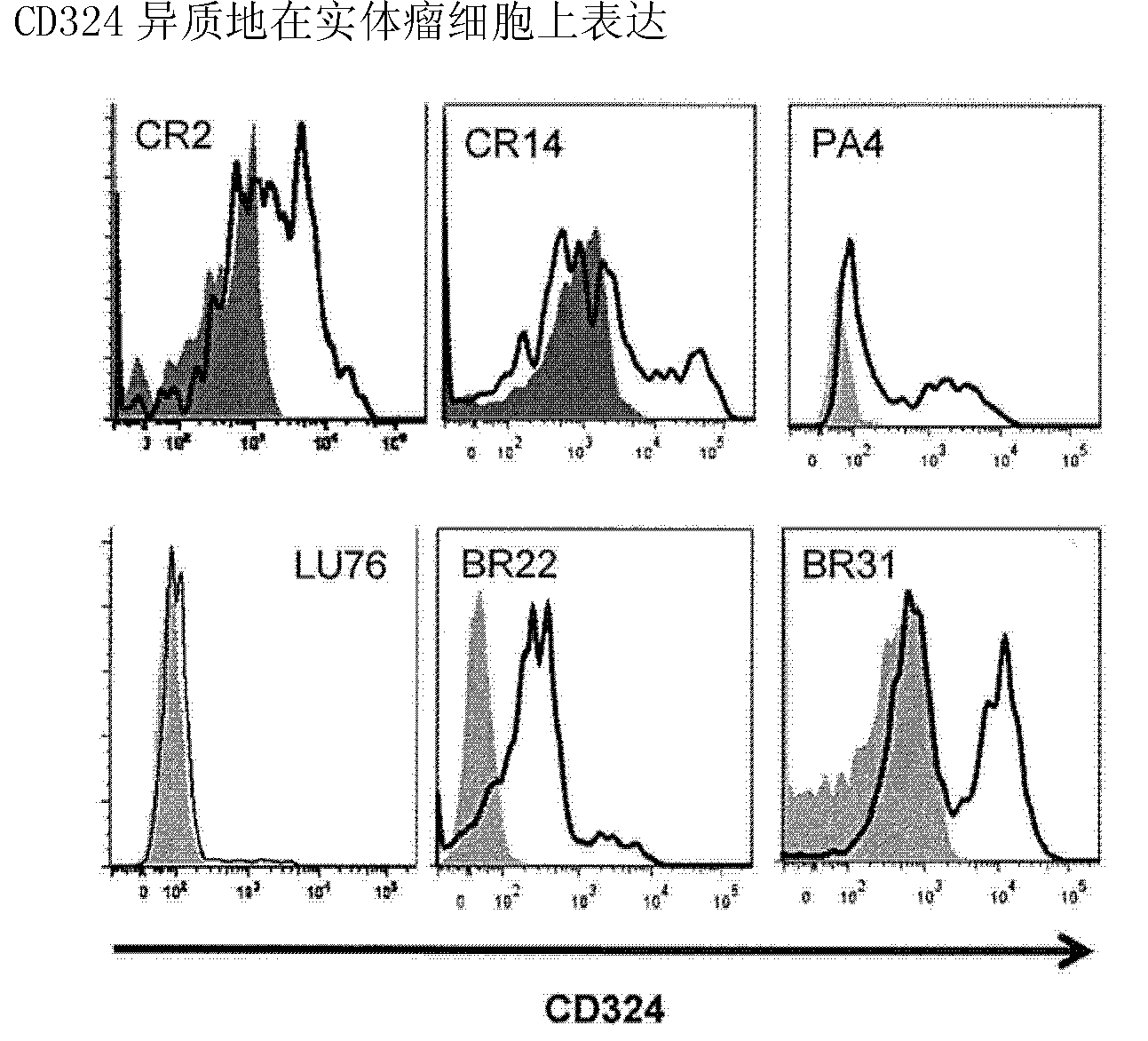Identification and enrichment of cell subpopulations
A technology of cell populations and cells, applied in the field of isolation or enrichment, identification of tumor-initiating cells, and characterization
- Summary
- Abstract
- Description
- Claims
- Application Information
AI Technical Summary
Problems solved by technology
Method used
Image
Examples
example 1
[0250] Characterization of tumor-initiating cell populations
[0251] To characterize the cellular heterogeneity of solid tumors as they exist in cancer patients, elucidate the identity of tumor perpetuating cells (TPCs; i.e. cancer stem cells: CSCs) using specific phenotypic markers and identify clinically relevant diagnostic biomarkers and therapeutic targets , using art-recognized techniques to develop and maintain large non-traditional xenografts (NTX TM ) tumor bank. NTX tumor repertoires containing large numbers of discrete primary tumors proliferate in immunocompromised mice through multiple passages of heterogeneous tumor cells originally derived from obtained by cancer patients. The availability of large numbers of discrete early passage NTX tumor cell lines with well-defined lineages has greatly facilitated the identification and isolation of TPCs into NTX tumor lines whose cells closely mirror the biology of tumors taken directly from patients, allowing reproducib...
example 2
[0258] Enrichment of tumor-initiating cell populations by FACS and transplantation
[0259] In tumors showing heterogeneous expression of specific proteins or proteins of interest (eg, CD46 and / or CD324), cells are enriched or isolated based on such markers and then transplanted into immunocompromised mice. More specifically, to determine whether high or low levels of surface CD46 and / or CD324 might be associated with enhanced tumorigenicity, NTX tumor samples were dissociated using prior art techniques as described above and analyzed using FACSAria flow cytometry. (BD Biosciences) to provide subpopulations enriched for different markers, which were then transplanted into immunocompromised mice. In this aspect, cells are injected subcutaneously into the mammary fat pad of immunocompromised female recipient NOD / SCID mice at doses typically ranging between 1,000 to 50 cells per mouse. When tumors arising from these grafts reach 800-2,000mm 3 , mice were euthanized and tumors w...
example 3
[0262] Representative cell surface markers expressed on tumor-initiating cells
[0263] Tumor-initiating cells, like all cells, can express thousands if not hundreds of markers or antigens, preferably on their cell surface. As such, while CD46 and CD324 are preferred markers for TICs, other concomitant markers can be used to identify and / or isolate the same subpopulation of tumor cells independent of the use of molecules capable of detecting CD46 and / or CD324. After confirming the TIC population using the cell surface marker profile described above, the PhenoPrint array was repeated using reagents in order to identify proteins that showed expression profiles comparable to CD46 and / or CD324, suggesting that these proteins could be used as CD46 and CD324 for purposes of the present invention. / or alternatives to CD324.
[0264] To identify proteins that are associated with TIC cell populations or that are abundantly co-expressed with CD46 and / or CD324, include non-PE-conjugate...
PUM
 Login to View More
Login to View More Abstract
Description
Claims
Application Information
 Login to View More
Login to View More - R&D
- Intellectual Property
- Life Sciences
- Materials
- Tech Scout
- Unparalleled Data Quality
- Higher Quality Content
- 60% Fewer Hallucinations
Browse by: Latest US Patents, China's latest patents, Technical Efficacy Thesaurus, Application Domain, Technology Topic, Popular Technical Reports.
© 2025 PatSnap. All rights reserved.Legal|Privacy policy|Modern Slavery Act Transparency Statement|Sitemap|About US| Contact US: help@patsnap.com



